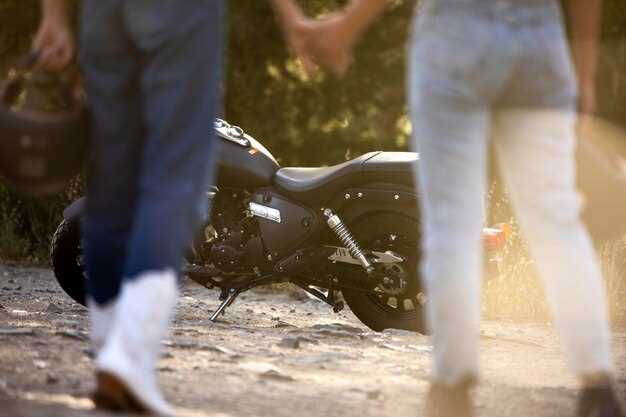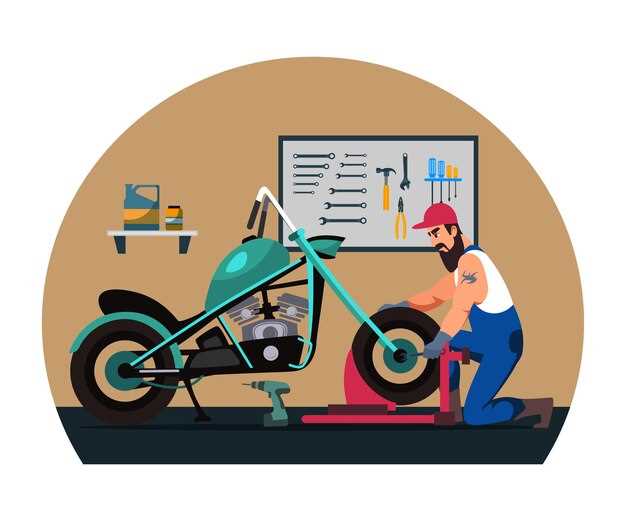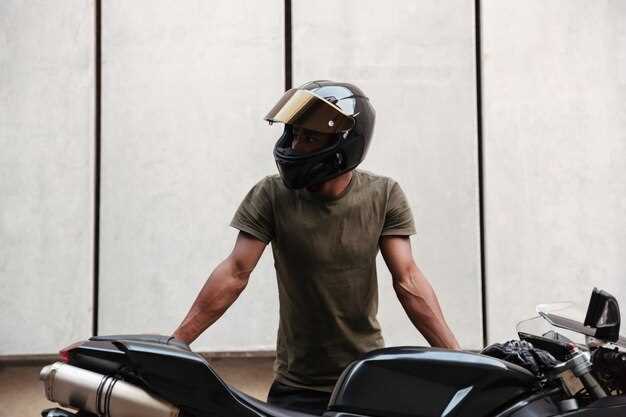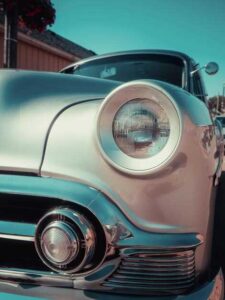For those deciding between touring and sport motorcycles, focus on your riding style and priorities. Touring bikes prioritize comfort, making them ideal for long-distance trips with features such as comfortable seating, ample storage, and advanced electronics. If you value spaciousness and the ability to take extended journeys, touring options excel with their superior ergonomics and added convenience.
Sport motorcycles, on the other hand, emphasize agility and performance. If speed, maneuverability, and a thrilling ride are what you seek, sport bikes deliver with their lightweight construction and responsive handling. They are designed for short bursts of intense riding, with a crouched riding position enhancing aerodynamics but sacrificing long-distance comfort.
Consider the engine type as well. Touring motorcycles often feature larger engines optimized for torque, allowing for smooth cruising at highway speeds. Sport motorcycles typically focus on horsepower and acceleration, generating excitement in quick starts and sharp turns. Choosing between these aspects directly impacts your riding experience.
Storage capacity also distinguishes these two categories. Touring motorcycles come equipped with integrated luggage systems, making them perfect for carrying gear. In contrast, sport motorcycles prioritize sleek designs, often lacking significant storage options. Understanding these key features will steer you toward the motorcycle that aligns with your riding ambitions.
Understanding Riding Position Differences Between Touring and Sport Bikes
The riding position on touring and sport motorcycles significantly affects comfort and control. Touring bikes prioritize a relaxed posture, while sport bikes focus on an aggressive stance for enhanced performance.
Touring motorcycles feature an upright seating position. The handlebars are higher and closer to the rider, allowing for a straight back and relaxed arms. This setup reduces fatigue during long rides, enabling more comfortable journeys over extended distances.
In contrast, sport bikes position the rider in a forward-leaning stance. Handlebars are lower, and the footpegs are positioned higher and farther back. This alignment shifts weight toward the front, enhancing aerodynamics and enabling quick maneuverability. Riders may experience more pressure on wrists and upper body, which can lead to fatigue on longer rides.
| Feature | Touring Bikes | Sport Bikes |
|---|---|---|
| Seating Position | Upright | Forward-leaning |
| Handlebar Height | Higher | Lower |
| Footpeg Position | Lower and forward | Higher and rearward |
| Comfort Level | More comfortable for long distances | Better for performance and agility |
Selecting between these riding positions depends on your riding style. If you enjoy long-distance travels with comfort, touring bikes are ideal. For those who prefer speed and agility in the corners, sport bikes offer the necessary attributes.
Consider test riding both types to determine which position suits you best. Pay attention to how each configuration affects your comfort and control, especially during different riding scenarios.
Evaluating Comfort vs. Performance: Seat Design Insights
Prioritize seat design based on your riding habits. For daily commuting and long-distance touring, choose a seat that offers substantial cushioning and lumbar support. Look for features such as wider shapes and ergonomic contours that distribute weight evenly, reducing fatigue during extended rides.
Consider materials carefully. High-density foam provides comfort, while some models include gel inserts for added support. Leather or advanced synthetic covers improve durability and moisture resistance, ensuring comfort in various weather conditions.
Performance-oriented motorcycles often have narrower seats, allowing for better maneuverability and a more aggressive riding posture. These designs may sacrifice comfort for control, making your choice depend on how you prioritize agility versus long-term comfort.
Evaluate seat height and shape, as they affect your overall riding position. A seat that’s too high can strain your legs, while a low seat may compromise handling. Look for adjustable options to customize your experience based on personal preference.
- Cushioning: Opt for high-density foam or gel inserts for comfort during long rides.
- Shape: Favor wider, contoured seats for touring, and narrower styles for sport bikes.
- Materials: Choose durable and weather-resistant materials for improved comfort and longevity.
- Adjustability: Consider seats that allow height or angle adjustments for personalized comfort.
Try out different seats whenever possible. A seat that feels excellent in the showroom may not translate the same way after hours in the saddle. Seek feedback from other riders and read reviews focusing on real-world experiences. Prioritize what’s ideal for your riding style and don’t compromise comfort merely for aesthetics.
Fuel Efficiency: How Engine Types Affect Touring and Sport Bikes
Choosing between a touring bike and a sport bike often comes down to fuel efficiency, which heavily relies on the engine type. Touring motorcycles typically feature larger displacement engines, often four-cylinder or V-twin configurations. This setup provides ample torque and a smooth ride at highway speeds, yet may consume more fuel due to the heavier weight and lower RPM efficiency. Expect around 40-50 MPG for many touring models.
Sport bikes, on the other hand, utilize smaller, high-revving engines, usually inline-four or single-cylinder designs. These engines prioritize speed and agility over outright torque. With a focus on lightweight components and aerodynamic designs, sport bikes can achieve better fuel economy under specific conditions, averaging around 50-60 MPG. Riders can benefit from this efficiency, especially in urban environments where accelerations are quick and short.
Engine tuning plays a pivotal role as well. Touring bikes often include technology that enhances fuel efficiency, such as variable valve timing. These systems optimize engine performance across various speeds, allowing for better fuel management. Sport bikes may lack such features due to their racing origins but benefit from optimized fuel injection systems that improve combustion and reduce waste.
Transmission type affects fuel consumption, too. Touring motorcycles frequently ride with a six-speed transmission, enabling lower RPM at high speeds, which conserves fuel. Many sport bikes also employ a six-speed setup but may require higher RPMs during acceleration, impacting fuel economy during spirited riding.
In summary, while touring bikes offer comfort for long distances, their fuel economy might not be as impressive as the sport bikes, which excel in urban situations but may consume more fuel during aggressive riding. Analyzing your riding style and preferences will guide your decision for the most fuel-efficient choice between these two categories.
Assessing Storage Solutions for Long-Distance Travel
Choose hard saddle bags for maximum durability and security. These bags provide robust protection for your gear against the elements and road debris. Look for options with a waterproof design and locking mechanisms to safeguard valuables during stops.
Soft luggage is another viable choice, offering flexibility and lightweight options. Consider models made from heavy-duty materials that resist wear and tear. These bags can often be expanded when needed, providing additional storage for longer trips.
Tank bags serve as a convenient storage solution for items you need easy access to. Opt for models with magnetic or strap systems that fit securely on your motorcycle. Features like map pockets, quick-release buckles, and expandable compartments enhance functionality.
Utilize tail bags for added storage space without compromising the bike’s aerodynamics. Ensure compatibility with your motorcycle’s seat or rack system. Look for aerodynamic shapes that minimize wind resistance, allowing for a smoother ride.
Top boxes can offer extra security and convenience. Mount this type of storage on the rear of your bike for stable and secure gear transport. Choose locking models to keep belongings safe and explore options that match your bike’s aesthetics.
Consider how much storage space you need based on your itinerary. Assess weight distribution to maintain balance and handling. Divide belongings into categories for efficient packing and easy access during stops.
Finally, invest in additional packing organizers such as dry bags or compression bags to maximize space. These aids help keep your gear tidy, allowing for easy retrieval when needed. Prioritize organization to make long-distance travel seamless and enjoyable.
Suspension and Handling: What Makes Each Class Unique
Touring motorcycles prioritize comfort and stability over sharp handling. They feature longer suspension travel and softer spring rates, allowing them to absorb road imperfections effectively, making long rides more pleasant. Look for models equipped with adjustable shock absorbers to fine-tune the ride quality based on load or personal preferences.
Sport motorcycles, in contrast, focus on agility and responsiveness. They typically sport stiffer suspensions with shorter travel. This setup enables precise cornering and incredible feedback from the road. Riders should consider models with adjustable suspension settings, enhancing the ability to tailor the bike’s performance to different tracks or riding styles.
Touring bikes may use features like hydraulic suspension systems for easy adjustment while on the road, allowing riders to adapt to various conditions without stopping. Sportbikes often utilize a more simplistic approach, favoring lightweight components to reduce overall mass.
When it comes to handling, touring motorcycles tend to have a more laid-back geometry, which promotes straight-line stability. In contrast, sport motorcycles possess sharper rake angles, enhancing quick steering responses and corner entry. Riders interested in touring should choose bikes that offer a relaxed riding position to reduce fatigue on longer trips, while those leaning towards sport models should seek a more aggressive stance for greater control during spirited rides.
Ultimately, understanding the distinctions in suspension setups and handling characteristics allows riders to choose the motorcycle that best aligns with their riding aspirations, ensuring an enjoyable experience on every ride.
Safety Features: Examining the Standards for Touring and Sport Models
Touring motorcycles frequently incorporate advanced safety features tailored for long rides. Anti-lock braking systems (ABS) are standard, enhancing braking control by preventing wheel lock during emergency stops. Many touring models also offer traction control, ensuring stability under various conditions. Fog lights and adaptive headlights increase visibility, crucial for nighttime travel.
Sport bikes prioritize agility and performance while incorporating safety mechanisms. High-performance ABS is common, designed to provide effective braking at high speeds. Some models equip cornering ABS, managing brake pressure during turns, which significantly reduces the risk of skidding. Advanced tire pressure monitoring systems alert riders of inadequate tire pressure, contributing to overall safety.
Both categories often include robust chassis designs, enhancing crash protection. Touring motorcycles frequently have taller windshields and larger fairings, providing better wind protection, which can reduce fatigue and help maintain control. Sport models may feature reinforced frames to absorb impact during high-speed endeavors, improving rider safety during sudden maneuvers.
Visibility remains significant across both types. Touring motorcycles may have integrated turn signals and larger tail lights for increased visibility to other drivers. Sport bikes often utilize LED technology for brighter headlights and signals, ensuring better recognition on the road.
Riders should prioritize their safety equipment, such as high-quality helmets and protective gear. Many manufacturers offer motorcycles with built-in communication systems to maintain contact with other riders, adding an extra layer of safety during group rides. Overall, both touring and sport motorcycles provide a range of safety features designed to enhance rider confidence and reduce accident risks.







